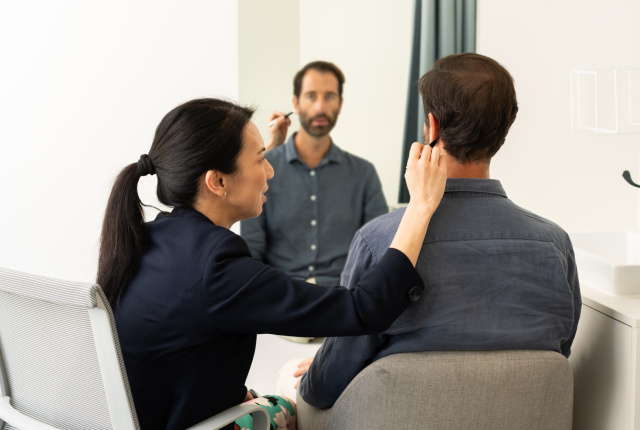Face lift
Aging of the face is inevitable and driven by genetics, sun exposure, personal habits and the pull of gravity. Over time, the skin and retaining ligaments begin to loosen, and fat pads start to sag on the face and neck. Crow’s feet appear at the corners of the eyes, fine forehead lines become deeper creases and folds, the jaw line softens into jowls, and vertical folds appear at the front of the neck. Face lift surgery aims to improve the visible signs of aging and create a more youthful facial appearance.

What does a face lift involve?
The exact face lift procedure will vary for each person. Depending on a person’s desired results:
- fat can be sculpted or redistributed from the face, jowls and neck
- skin and underlying soft tissue can be repositioned
- the deeper layers of the face can be lifted
- excess skin can be removed.
Regardless of the approach to surgery, incisions will need to be made. These will be concealed along or within the hairline and in the natural creases of the face and ear. An incision under the chin may also be necessary to remove platysmal bands (thin layer of muscle underlying the neck skin) to further improve the appearance of the aging neck.
A face lift may be performed at the same time as a neck lift, blepharoplasty (eyelid surgery), browlift as well as non-surgical facial rejuvenation treatments.
What to expect following a face lift
Associate Professor Ch’ng performs face lift surgery, including minimal access caudal suspension (MACS), superficial musculoaponeurotic system (SMAS) resection and/or plication, and deep-plane face lift, under general anaesthetic in a fully accredited hospital. Depending on the complexity, extent, and type of face lift and neck lift undertaken, surgery can take between four and eight hours. Following surgery, drainage tubes may be used overnight to drain excess fluid and blood that may collect under the skin. Patients will have bandages around their face for 24-48 hours after surgery to minimise swelling and bruising.
Following the initial post-operative period, patients may be required to wear supportive garments as much as practical for up to six weeks. Sutures are removed at around day 10. Vigorous activity is discouraged for six weeks.
Patients may notice some tightness or numbness on the face or neck, depending on the exact surgery performed.
Get in touch
If you’d like to know more about our head and neck, plastic or skin cancer surgical services, or if you have a question for Dr Ch’ng, we’d love to hear from you.
